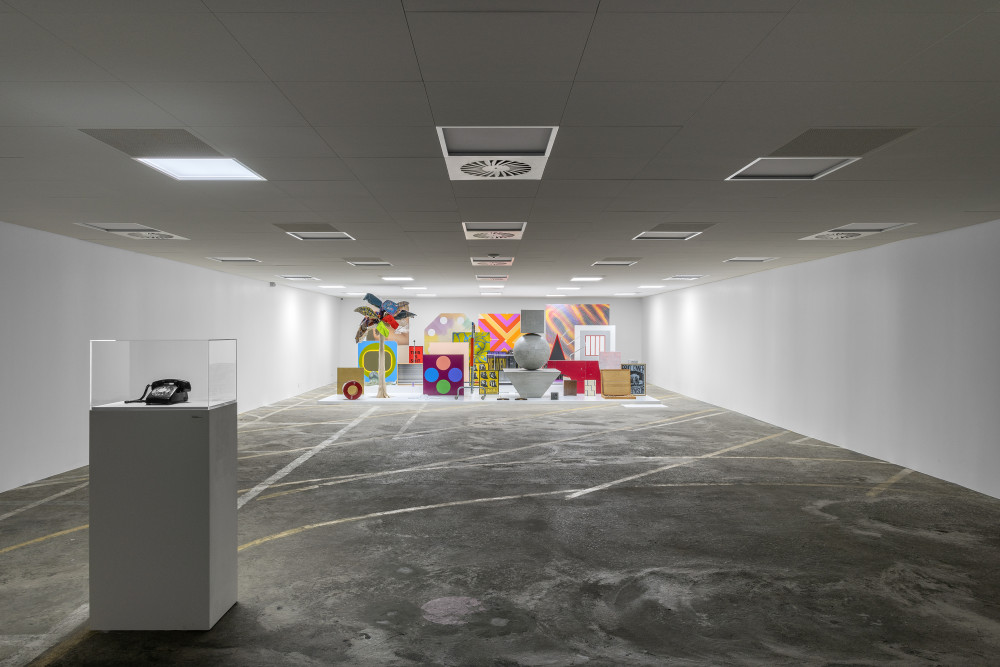All of the Above, 2011 – 2020

In this project with its spectacular staging by John M Armleder the works of art observe us rather than the other way round.
All of the Above, the brainchild of John M Armleder, was inspired by memories of two exhibitions. As a child the artist visited the Museum of Egyptian Antiquities and had the surprising sensation that it was not he and his family who were observing the sarcophagi, but the sarcophagi that were observing them. He also remembers visits to temples in Asia where the characters and the statues seemed to be watching the spectators as they walked through the entrance.
All of the Above literally positions visitors right opposite works by around 40 artists. Laid out on a huge platform, these works jostle alongside and behind and in front of the other pieces and form a landscape that visitors can explore from a distance. The choice of the diverse range of works means that creations from the sixties mingle with more recent pieces, resulting in a mix of geographic origins, media and formats.
In the same way as None of the Above (presented in parallel at the SR2), All of the Above is based on a gesture that is both simple and yet radical: the artist aligns the works on a structure. Installed rather liberally, they seem to be almost chaotic, representing a subjective and temporary collection. The stage an open space, potential, confronts the notions of permanence and fixedness that are all too often associated with museum collections. The works are thus brought back to their living, active dimension. And it is no coincidence that Armleder likes to remind us that, for him, "producing a painting, putting on a performance or an exhibition are all the same in a way”.
